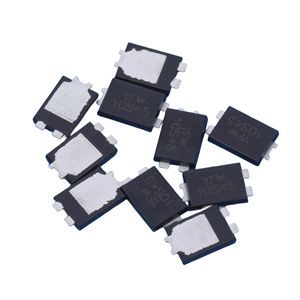Date:2024-10-11 Categories:Product knowledge Hits:312 From:Guangdong Youfeng Microelectronics Co., Ltd
The turn off circuit of rectifier diode is the simplest acceleration circuit.
The Rgate adjusts the turn-on speed of the MOS transistor. When it is turned off, the rectifier diode short circuits the resistance, and the minimum current at the G pole is Imin=Vf/Rgate.
The advantage of a rectifier diode circuit is that it greatly accelerates the turn off speed, but it only operates when the voltage is high and the current still flows to the driver. 2. PNP Shutdown Circuit 2. PNP Shutdown Circuit This is the most popular and common circuit that uses PNP transistors to short-circuit the source and gate during shutdown.
The rectifier diode provides a current path during turn-on (and protects the PNP transistor eb from reverse voltage), while the Rgate limits the turn-on speed. The biggest advantage of a rectifier diode circuit is that the peak of the discharge current is limited to the smallest loop, and the current does not return to the driver, so it does not cause ground bounce. The power of the driver is also reduced by half, and the presence of a transistor reduces the inductance of the loop.
Upon closer inspection, the rectifier diode circuit is actually a simplification of the totem pole structure. The only drawback of the rectifier diode circuit is that the gate voltage is not released to 0V, but there is a voltage difference at the EC pole.

Previous: Classification, Structure, and Principle of MOSFET
Next: Using voltage inspection method to quickly locate fault points in integrated circuits